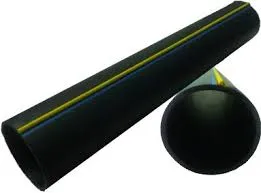Қыр . 10, 2024 11:59 Back to list
hdpe pipe fitting
Understanding HDPE Pipe Fittings Essential Components in Modern Infrastructure
High-Density Polyethylene (HDPE) piping systems have gained immense popularity in recent years due to their durability, flexibility, and resistance to a wide range of chemicals. As industries seek reliable and cost-effective solutions for their piping needs, HDPE pipe fittings have emerged as essential components that facilitate the connection, direction, and control of fluid flow within these systems.
What are HDPE Pipe Fittings?
HDPE pipe fittings are designed to connect various sections of HDPE pipes, enabling the creation of intricate piping networks necessary for different applications, from water supply and wastewater management to industrial systems. These fittings are available in various shapes, sizes, and configurations, including elbows, tees, couplings, reducers, and flanges, allowing for versatile installation options.
Advantages of HDPE Pipe Fittings
1. Durability and Longevity One of the primary advantages of HDPE pipe fittings is their longevity. Made from high-density polyethylene, they can withstand extreme temperatures and harsh environmental conditions. This makes them ideal for both underground and aboveground installations.
2. Corrosion Resistance Unlike traditional metal fittings, HDPE does not corrode or rust. This property is particularly important in applications involving aggressive chemicals or in coastal environments where corrosion can be a concern.
3. Ease of Installation HDPE fittings are lightweight compared to metal counterparts, simplifying handling and installation. This can lead to reduced labor costs and quicker project completion times.
4. Flexibility The flexibility of HDPE fittings allows for easy adjustments and expansions of piping systems without the need for additional fittings. This makes them suitable for projects where future modifications might be necessary.
hdpe pipe fitting

5. Leak-Free Joints HDPE pipe fittings can be joined using several methods, including butt fusion, electrofusion, and mechanical connections. These methods create strong, leak-free joints that significantly reduce the risk of leaks in piping systems.
Applications of HDPE Pipe Fittings
HDPE pipe fittings are widely used in various sectors, including
- Water Supply They are essential for municipal water distribution systems, ensuring safe and efficient transport of potable water.
- Sewer and Drainage Systems Due to their resistance to chemicals and durability, HDPE fittings are a common choice for sewer and stormwater drainage applications.
- Industrial Applications Many industries, including chemicals and petrochemicals, use HDPE fittings for safe transportation of corrosive substances.
- Agricultural Irrigation The adaptability of HDPE fittings is invaluable in agriculture for irrigation systems, where they can help manage water flow effectively.
Conclusion
In conclusion, understanding HDPE pipe fittings is crucial for anyone involved in the planning, design, or installation of piping systems. Their numerous advantages, including durability, flexibility, and resistance to corrosion, make them a preferred choice across various industries. As infrastructure demands evolve, the role of HDPE piping and its fittings will only grow, further solidifying their importance in modern engineering and construction. Whether for water supply, wastewater management, or industrial conveyance, HDPE pipe fittings stand out as reliable solutions that meet the needs of today and tomorrow.
-
Durable PVC Pipe Fittings for Plumbing & Irrigation Needs
NewsAug.18,2025
-
HDPE Steel Belt Reinforced Spiral Corrugated Pipe | High Strength
NewsAug.17,2025
-
HDPE Pipe Fittings: Durable, Leak-Proof Solutions
NewsAug.16,2025
-
Premium CPVC Sheet: High-Temp & Chemical Resistant Solutions
NewsAug.15,2025
-
Durable PPR Pipe for Hot & Cold Water Systems - Easy Install
NewsAug.14,2025
-
Durable HDPE Sheet | Versatile & Impact-Resistant Plastic
NewsAug.13,2025

